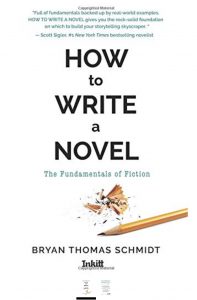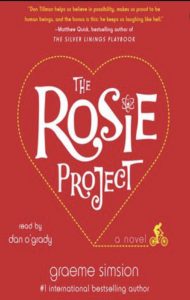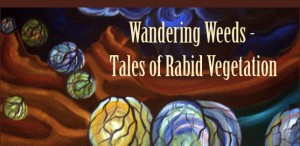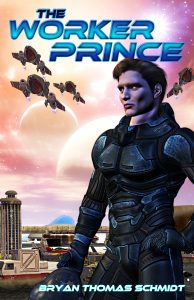 Today, we’re going to talk about The Rule of Threes, or rule of three, as some call it. It is a technique where you set up gags or bits so that they recur three times in a story, each time successively bigger and funnier or more dramatic. Wikipedia defines it as follows:
Today, we’re going to talk about The Rule of Threes, or rule of three, as some call it. It is a technique where you set up gags or bits so that they recur three times in a story, each time successively bigger and funnier or more dramatic. Wikipedia defines it as follows:
The rule of three is a writing principle that suggests that a trio of events or characters is more humorous, satisfying, or effective than other numbers in execution of the story and engaging the reader. The reader or audience of this form of text is also thereby more likely to remember the information conveyed. This is because having three entities combines both brevity and rhythm with having the smallest amount of information to create a pattern.
The repetition makes the payoff greater. In comedy writing, the first occurrence tends to be a smaller laugh. The second, medium. The third is hopefully a real guffaw. The actual events of the joke don’t recur each time. For example, if a banana peel were the joke, you might start by having someone fall on one. The second time they might dodge a banana peel because they expected to fall and someone else falls instead. The third time they find banana peels falling from a truck and everyone is slipping and sliding. A lame, silly example and a cliché, but it illustrates the point. Each successive recurrence gets bigger with a twist, until the third recurrence is much bigger and much funnier. The payoff breaks the pattern enough that it surprises us but not so much that it is a non sequitur. It is about something unexpected that breaks the pattern yet is connected to it enough so that we recognize it. Hence, the first two times, someone drops a banana peel. The third time, a truck full of banana peels breaks the pattern.
Using the rule of threes is a great way to plant humor in stories and pay them off over time for bigger laughs. The catch is that it must be familiar enough for the audience to understand, and it must be specific. The more specific, the better for comedy. As comedian Simon Taylor explains:
The rule of three creates an assumption by listing two similar items, then a third one that differs in a fundamental way: I like red wine, classical music, and committing brutal homicides. They then become more elaborate by having introductions to the items: I didn’t have time to pack much for the weekend, just: socks, undies … my ninja sword. To add to these, you can reiterate the assumption at the end of the joke by using what comedians call a “tag”: Man, I love the horse races: the big winnings, the fashion, the woman collapsing in a pool of their own vomit. It’s all fun.
(https://mrsimontaylor.wordpress.com/2010/ 12/03/the-psychology-of-comedy-rule-of- threes/)
The extra elements of introductions and tags act to reinforce the assumptions created by the first two items in the list. To take the second joke as an example, we hear the word “socks” and subconsciously associate it with categories such as “clothing,” “basic,” and “essential.” When we hear that “undies” is the next item, those categories are reinforced. In comes the “ninja sword” to contradict those categories, which is what causes some nice little chuckles.
In comedy movies and sitcoms, we see this rule applied time and again. Sometimes it occurs so often that audiences can see it coming and have come to expect it.
The same principle of repetition can be used to increase dramatic effect in more serious works because audiences pick up on the pattern and remember. Take “The Three Little Pigs,” the three ghosts of A Christmas Carol, or “Three Billy Goats Gruff,” even Goldilocks and her three bears. The three encounters each play out differently with different emotional and dramatic effects to raise the stakes and challenge the character, each adding to the one(s) before and forcing the character to confront something. In the end, they leave the character changed—usually for the better.
The first occurrence is a setup with a milder dramatic impact but an impact nonetheless. However, each successive recurrence increases in dramatic effect because the stakes go up with the repetition as the audience connects the character’s emotional and physical experience (nuance) dealing with the original occurrence and then each successive recurrence to up the tension of having to deal with a similar situation yet again. The ultimate result is increased drama and audience investment and a deeper emotional resonance and sense of nuance throughout your story.
 If you haven’t employed this method before on purpose, chances are you have on instinct. Go back and look at some of your previous works if you’re not sure and see if that’s the case. If not, now you have a tool, but even if it is, being able to understand it allows you to use The Rule Of Threes to greater impact and effect.
If you haven’t employed this method before on purpose, chances are you have on instinct. Go back and look at some of your previous works if you’re not sure and see if that’s the case. If not, now you have a tool, but even if it is, being able to understand it allows you to use The Rule Of Threes to greater impact and effect.
[NOTE: Portions of this post were repurposed from my nonfiction book HOW TO WRITE A NOVEL: The Fundamentals of Fiction, which you can download for free on ebook here.]


 I don’t review books on here very often, and then only when I have nice things to say about them. There’s a reason for this: authors get mad and bad blood can be problematic in an industry where everyone knows everyone. But invariably as a writer, you tend to get critical of books and craft. You can’t just read for fun anymore. You get a glimpse at the inner works.
I don’t review books on here very often, and then only when I have nice things to say about them. There’s a reason for this: authors get mad and bad blood can be problematic in an industry where everyone knows everyone. But invariably as a writer, you tend to get critical of books and craft. You can’t just read for fun anymore. You get a glimpse at the inner works.
